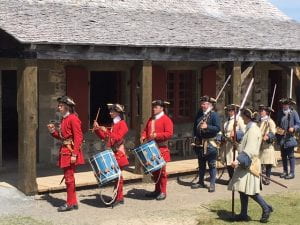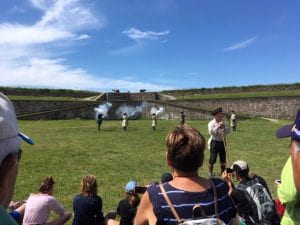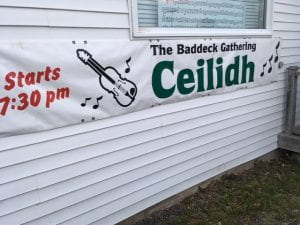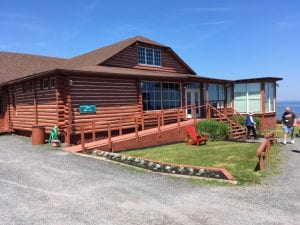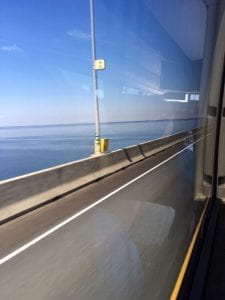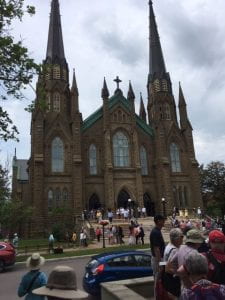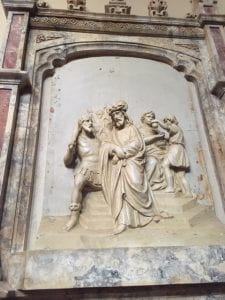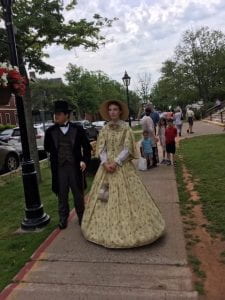Day 5 found us at the Fortress at Louisbourg, Nova Scotia.
The Fortress at Louisbourg is the largest reconstruction of an historic site in Canada. perched along the harbor south of Cape Breton. It was built by the French, but captured during the French and Indian War in 1755 by the British. It was during the British occupation that the Acadians were expelled from the maritimes, shipped to Boston, Philadelphia and points south.
Below we witness a demonstration of muskets and cannons, followed by a parade from the outer walls into the center of f0rtress.
On Friday evening we attended a “ceilidh” or “kitchen party” of traditional Gaelic music with fiddle and piano. Almost no written music was employed for concert, because it is chiefly an oral tradition passed on by master to apprentice. The fiddler and pianist were remarkably synchronized and skilled. Photography was permitted, but not flashes or social media posting. We were warned twice with dire consequences promised after the first incident. We put our phones away.
The next day (Sixth) we had lunch at the Pictou Lodge (below), a small resort facing the Straits of Northumberland. The situation was exquisite, the pizza buffet delicious, the weather warm enough to welcome a shore breeze. Pictou is where we would have taken the ferry to Prince Edward Island, except for some mechanical failure, which hastened our detour to the
Confederation Bridge, a nine-mile colossus covering the shortest gap between Nova Scotia and Prince Edward Island, yet the longest span in the country. It consists of short “approaches” from each side and five-mile connector in the middle. Technically the western approach comes from New Brunswick. En route we saw a film of its manufacture.
That night we attended a performance of Anne of Green Gables, featuring talented, but overage actors playing Anne and Gilbert, making the teenage characters appear more post-college graduates than young adults. Probably Sara-Jeanne Hosie, as “Miss Stacey,” the successor teacher, was most lyrical and age-appropriate.
On the Seventh Day, we awoke to a whimsical historical lecture by Cameron McDonald beginning inside the hotel and continuing to walk the streets of Charlottetown. At the site of a town playground he recalled the hanging of George Dowie, a sailor who lived with a “female acquaintaince,”who became the object of a barroom brawl and murder. All appeals for clemency were promptly refused by the Colonial Office. And so, on April 6, 1869, George Dowie was sentenced to meet his fate. https://everything2.com/title/The+Hanging+of+George+Dowie
The story is full of drama and pathos, as George Dowie prevented a riot for his defense by silencing the mob and letting his execution go forward. Read the grotestque details above.
St. Dunstans Church was the fourth structure erected for worship for Roman Catholics, the previous three burned down or moved unsuccessfully. An awesome gothic structure, it felt dark and ominous on the day we visited, as an organ played discordantly in the afternoon. The scene of Pilate’s hand-washing is depicted, among the many friezes of the Stations of the Cross around the sanctuary. The couple in period costume are among many performers to be found on the streets of Charlottetown.
The highlights of Day Seven have to include excellent meals at The Brickhouse (Crab Cakes) and The Pilot (lobster roll and Caesar Salad), as well as indulgent purchases at the Roadrunner (running shirts and a jacket) and at The Book Emporium (featuring C.S. Lewis, Laura Hillenbrand and Shaun Tan). Really the best way to enjoy a Sunday in Charlottetown.

